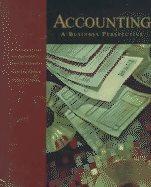

Activity-Based Customer Costing Deeds Company sells custom-made machine parts to industrial equipment manufacturers by bidding cost plus 40 percent, where cost is defined as manufacturing cost plus order processing cost. There are two types of customers: those who place small, frequent orders and those who place larger, less frequent orders. Cost and sales information by customer category is provided below. Frequently Ordering Customers Less Frequently Ordering Customers Sales orders 35,000 3,500 Order size 15 150 Average unit manufacturing cost $40 $40 Order-processing activity costs: Processing sales orders $2,878,500 Order-filling capacity is purchased in steps (order-processing clerks) of 1,000, each step costing $41,000; variable order-filling activity costs are $35 per order. The activity capacity is 45,000 orders; thus, the total order-filling cost is $3,192,500 [(45 steps x $41,000) + ($35 x 38,500)]. Current practice allocates ordering cost in proportion to the units purchased. Deeds recently lost a bid for 100 units. (The per-unit bid price was $2 per unit more than the winning bid.) The manager of Deeds was worried that this was a recurring trend for the larger orders. Other large orders had been lost with similar margins of loss.) No such problem was taking place for the smaller orders; the company rarely lost bids on smaller orders. Required: 1. Calculate the unit bid price offered to Deeds's customers assuming that order-filling cost is allocated to each customer category in proportion to units sold. Note: Do not round interim calculations. Round your final answer to the nearest cent. 2. Assume that a newly implemented ABC system concludes that the number of orders placed is the best cost driver for the order-filling activity. Assign order-filling costs using this driver to each customer type and then calculate the new unit bid price for each customer type. Note: Do not round interim calculations. Round the final order cost allocation to the nearest whole dollar. Round final bid prices to the nearest cent. Order Cost Allocation Bid Price round to whole dollar round to two decimals Frequently ordering Less frequently ordering Using this new price, would Deeds have won the bid for the units recently lost? 3. What if Deeds offers a discount for orders of 35 units or more to the frequently ordering customers? Assume that all the frequently ordering customers can and do take advantage of this offer at the minimum level possible. Compute the new order cost allocation and bid price. Note: Round the number of stepsUP to the nearest whole number, using that result in future calculations. For the Order Cost Allocation and Bid Price, do not round interim calculations. Then round the final order cost allocation to the nearest whole dollar and final Bid Price the nearest cent. Bid Price Order Cost Allocation round to whole dollar round to two decimals Frequently ordering Can Deeds offer the original price from Requirement 1 to the frequently ordering customers and not decrease its profitability? Activity-Based Customer Costing Deeds Company sells custom-made machine parts to industrial equipment manufacturers by bidding cost plus 40 percent, where cost is defined as manufacturing cost plus order processing cost. There are two types of customers: those who place small, frequent orders and those who place larger, less frequent orders. Cost and sales information by customer category is provided below. Frequently Ordering Customers Less Frequently Ordering Customers Sales orders 35,000 3,500 Order size 15 150 Average unit manufacturing cost $40 $40 Order-processing activity costs: Processing sales orders $2,878,500 Order-filling capacity is purchased in steps (order-processing clerks) of 1,000, each step costing $41,000; variable order-filling activity costs are $35 per order. The activity capacity is 45,000 orders; thus, the total order-filling cost is $3,192,500 [(45 steps x $41,000) + ($35 x 38,500)]. Current practice allocates ordering cost in proportion to the units purchased. Deeds recently lost a bid for 100 units. (The per-unit bid price was $2 per unit more than the winning bid.) The manager of Deeds was worried that this was a recurring trend for the larger orders. Other large orders had been lost with similar margins of loss.) No such problem was taking place for the smaller orders; the company rarely lost bids on smaller orders. Required: 1. Calculate the unit bid price offered to Deeds's customers assuming that order-filling cost is allocated to each customer category in proportion to units sold. Note: Do not round interim calculations. Round your final answer to the nearest cent. 2. Assume that a newly implemented ABC system concludes that the number of orders placed is the best cost driver for the order-filling activity. Assign order-filling costs using this driver to each customer type and then calculate the new unit bid price for each customer type. Note: Do not round interim calculations. Round the final order cost allocation to the nearest whole dollar. Round final bid prices to the nearest cent. Order Cost Allocation Bid Price round to whole dollar round to two decimals Frequently ordering Less frequently ordering Using this new price, would Deeds have won the bid for the units recently lost? 3. What if Deeds offers a discount for orders of 35 units or more to the frequently ordering customers? Assume that all the frequently ordering customers can and do take advantage of this offer at the minimum level possible. Compute the new order cost allocation and bid price. Note: Round the number of stepsUP to the nearest whole number, using that result in future calculations. For the Order Cost Allocation and Bid Price, do not round interim calculations. Then round the final order cost allocation to the nearest whole dollar and final Bid Price the nearest cent. Bid Price Order Cost Allocation round to whole dollar round to two decimals Frequently ordering Can Deeds offer the original price from Requirement 1 to the frequently ordering customers and not decrease its profitability








